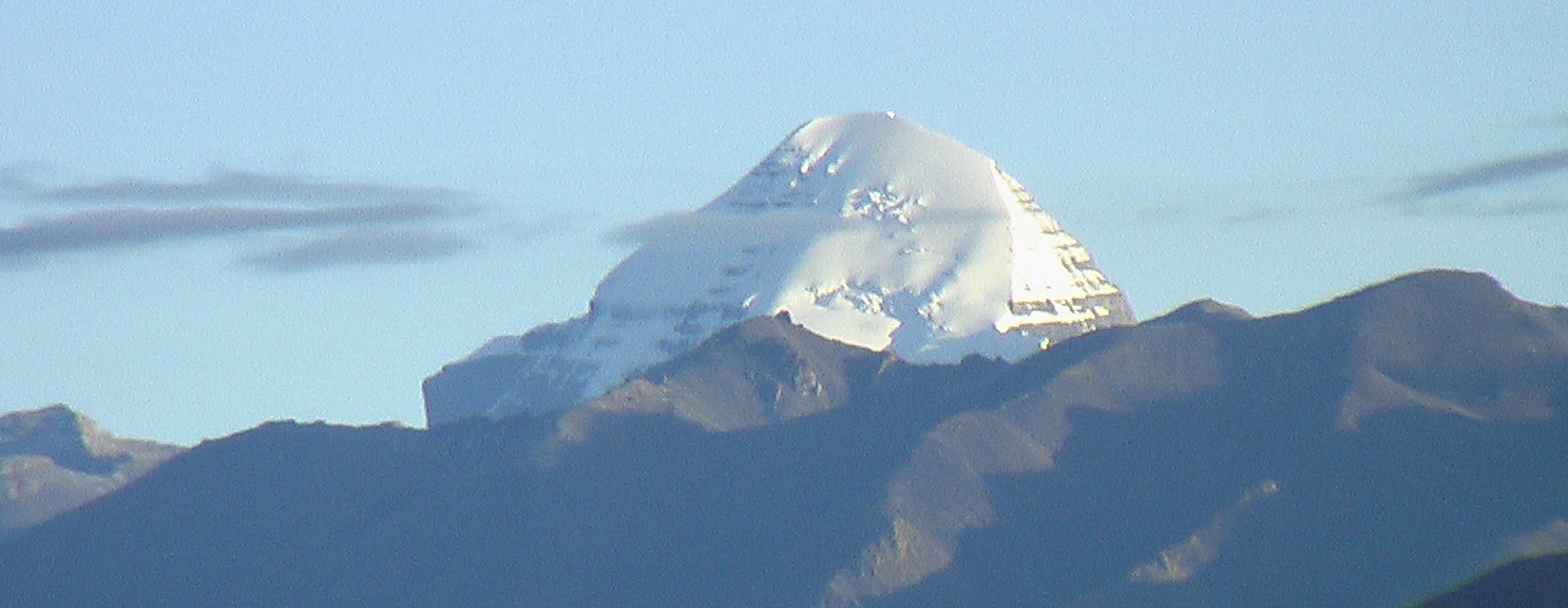About Kailash Mansarovar Tour from Nepal 2025,2026 - Booking NOW!
Kailash Mansarovar Tour from Kathmandu, Nepal
The Mount Kailash Mansarovar Tour from Nepal organized by Himalayan Asia Treks offers an unforgettable spiritual journey to one of the holiest sites for Hindus and Buddhists. The Kailash Mansarovar Tour Package from Kathmandu includes a well-planned itinerary, allowing pilgrims to experience the sacred beauty of Mount Kailash and Lake Mansarovar. The package options for Kailash Mansarovar Yatra 2025, 2026 include traditional overland routes as well as the Kailash Mansarovar Tour from Nepal by helicopter, which offers a quicker and more convenient experience. For Nepali travelers, the Kathmandu to Kailash Mansarovar Tour Cost is tailored, with competitive prices starting from around $1,500 depending on the mode of travel and services. The Kailash Mansarovar Tour from Nepal cost varies with transportation options, but all packages offer the best combination of spiritual fulfillment and adventure, ensuring a best Kailash Mansarovar tour from Nepal experience. If you are searching Mount Kailash Yatra Tour from Nepal on Bed and breakfast plan then , we have another option : Click Here .
China/ Tibet Visa for the Kailash Mansarovar Tour from Nepal
For the Kailash Mansarovar Tour from Nepal, travelers from certain countries can enter Tibet/China without a visa but must carry a Tibet Travel Permit, which your travel agency will arrange. These countries include Andorra, Australia, Austria, Belgium, Brunei, Bulgaria, Croatia, Cyprus, Denmark, Estonia, Finland, France, Germany, Greece, Hungary, Iceland, Ireland, Italy, Japan, Latvia, Liechtenstein, Luxemburg, Malaysia, Malta, Monaco, Montenegro, Netherlands, New Zealand, North Macedonia, Poland, Portugal, Romania, Slovakia, Slovenia, South Korea, Spain, and Switzerland. Travelers from other countries are required to apply for a Chinese visa through the China Visa Center in Kathmandu. The process takes three working days and will be facilitated by your local travel company: Himalayan Asia Treks. Regarding Indian Passport holder, please check our another page: Mt Kailash Mansarovar Yatra from India.
Mount Kailash Mansarovar Tour Cost
The Cost of the Mount Kailash Mansarovar Lake Tour from Kathmandu varies depending on the level of accommodation, transportation, and other facilities chosen. Standard packages typically include basic lodging, meals, transportation, and permits, while more luxurious options feature upgraded hotels, private vehicles, and personalized services. Additional factors, such as the mode of travel (overland or helicopter), group size, and season, can also influence the overall cost. Travelers should consult reliable tour operators like Himalayan Asia Treks to customize their itinerary and ensure a hassle-free journey within their budget.
No of Person | Cost Per Person | Tour Type | Meal |
4-10 person | US$3389.00 | Private | Full board plan |
11-15 person | US$2989.00 | Private | Full board plan |
16 ++ person | US$2467.00 | Private | Full board plan |
Group Joining | US$1499.00 | Group Joining | Bed and Breakfast plan |
* Full Board Plan: Breakfast, lunch and dinner.
- If you are more than 04 persons and want to Mount Kailash Tour private then we, Himalayan Asia Treks organise private tour with Nepali support members on your comfortable date with customised itinerary.
- The next option is Group Joining on the above mentioned date and drop us message for your comfortable date . For queries : Whatsapp or email: himalayanasiatreks@gmail.com .
Best Time to visit Kailash Mansarovar
Kailash Mansarovar Tour from Kathmandu,Nepal 2025,2026 April to October is primarily popular amongst Hindu and Buddhist devotees and those who love adventures in the mountains and nature. The Mount Kailash Mansarovar Tour begins from the city of temple - Kathmandu (Pashupatinath Temple),Budhanilkantha (Sleeping Vishnu) Kathmandu, Nepal, and ends after returning from Mount Kailash Tibet, Lhasa, to Nepal. Kailash Mansarovar Tour from Nepal tailor to cover the most popular iconic Heritage sites, pilgrimages, landmarks, and mesmeric mountains of this two beautiful countries Nepal and China (Tibet).
The first part of the Tour begins with your own visit to UNESCO World Heritage Sites in Kathmandu like Kathmandu Durbar Square, Swayambhunath Stupa, Pashupatinath Temple, Boudhanath Stupa, the largest in Asia, Patan Durbar Square, and Bhaktapur Durbar Square while heading back from Nagarkot. Then, we will hide out for a night at this beautiful hill station to enjoy the dusk and dawn, the sun-kissed mountain ranges, and those green valleys on the outskirts.
The second part of the Tour will be a journey to Lake Mansarovar and Mt. Kailash. This journey comprises two parts - a drive and a hike/Kora in holy Kailash Parvat. Our journey will start with a drive from Kathmandu to Kyirong, Nepal-Tibet border. Then, we will cross the border and drive to Lake Mansarovar with night amazing city of Tibet - Saga and Kerung. Finally, bathe and worship at the Holy Lake Mansarovar and take a 'Parikrama/Kora’-the circumambulation.
Later, we drive to Tarboche/Yamadwar via Darchen, from where the actual part of the adventure/Kora begins, as it takes three days hike (with night layovers) to complete the KORA (circumambulation) of the holy Mt. Kailash Parvat. One who cannot walk this long has more nights at Mansarovar until the return of those in KORA. We will then rejoin them and saddle up in our transport and trace back the same road to Darchen from Yamdar.After reaching Yama Dwar, we hike Dirapuk and hike towards Mount Kailash Charan Sparash then back to Dhirapuk. Another morning, we walk around the Kailash via Dolma La Pass, Gauri Kunda around 19 KM . Today is the difficult day because we reach 5630 meters and walk down towards Zuthulpuk with rough walking trails. From Zuthulpuk , we walk 5 KM /around 2 hours thn drive to Saga via Darchen. From Saga , we will take same route which we use while going .
We will conclude this Kailash Mansarovar Tour from Nepal the next day after we reach Kathmandu.
Do and Don’t for Kailash Mansarovar Yatra
The Kailash Mansarovar Yatra is a significant pilgrimage for Hindus, Buddhists, Jains, and followers of the Bön tradition. Mount Kailash Mansarovar Tour from Nepal involves visiting the sacred Mount Kailash and Lake Mansarovar, located in the Himalayas. This journey requires careful planning and preparation due to its challenging terrain and high altitude conditions.
Do's:
Physical Fitness: Prior to embarking on the Kailash Tour, ensure that, you are physically fit to walk to do Kora . Engage in regular exercise and consult a doctor to assess your health status.
- Permit and Visa: Himalayan Asia Treks manage permits and Visa(China Group Visa). Permit will be issued before one month ago of your tour date. Regarding China Group Visa, Himalayan Asia Treks apply but travellers have to come before 4 days before the trip start. Now, China government gives on arrival Visa for 39 countries (Australia, Italy, Malaysia and more.)
- Guided Group Tour: We have publish date for fixed departure Group joining tour also. We have good experienced in handling the logistics of the journey and ensuring your safety. If you have more then 04 person and want to do private tour also consult with our Trip Planner.
- Altitude Acclimatization: Gradually acclimatize to the high altitude environment to prevent altitude sickness. Stay hydrated and avoid strenuous activities during the initial days of the journey.
- Weather-Appropriate Clothing: Pack warm and weather-appropriate clothing, as the weather can change rapidly at high altitudes. Layering is key to managing temperature changes.
- Respect Local Customs: Be respectful of the local culture and customs. This includes dressing modestly, avoiding public displays of affection, and following local guidelines.
- Environmental Conservation: Respect the natural environment and do not litter. Carry back any waste you generate during the journey.
- Spiritual Reflection: Take time for spiritual reflection and meditation. The yatra is not just a physical journey but also a spiritual one.
Don'ts:
Solo Journey: Avoid undertaking the journey alone, as the challenging conditions and altitude can pose significant risks. It's safer to be part of an organized group.
- Rapid Ascent: Do not ascend rapidly to higher altitudes. Give your body time to acclimatize to the changing altitude to prevent altitude sickness.
- Ignoring Altitude Sickness: If you experience symptoms of altitude sickness, such as headache, nausea, or dizziness, do not ignore them. Inform your guide and take necessary actions.
- Disrespecting Sacred Sites: Show respect for the sacred sites you visit. Follow any guidelines or restrictions related to these areas.
- Photography Etiquette: Ask for permission before taking photos of people or their belongings. Some locals might not be comfortable with photography.
- Overexertion: Avoid strenuous physical activities, especially in the initial days of the journey. Allow your body to adjust to the high altitude gradually.
- Disregarding Guidelines: Follow the instructions and guidelines given by tour operator and guides. These guidelines means to ensure your safety and well-being.
- Waste Disposal: Do not litter or leave behind any waste. Carry all your waste back and dispose of it responsibly.
Things to know before Kailash Mansarovar Tour from Nepal
How much does it cost for Kailash Mansarovar Yatra from Nepal?
The cost for the Kailash Mansarovar Tour from Kathmandu,Nepal varies depending on the tour package, mode of travel, and services included. On average, the price ranges from USD 1,500 to USD 3,000 per person. The cost typically covers accommodation, transportation, meals, guide services, permits, and necessary travel logistics.
Can we go to Kailash Mansarovar from Nepal?
Yes, you can go to Kailash Mansarovar from Kathmandu, Nepal. Himalayan Asia Treks in Nepal offer organized trips to Kailash Mansarovar, typically starting from Kathmandu. The journey usually involves traveling overland via Nepal’s border with Tibet at the Hilsa or Kerung route or a combination of road travel and flights.
How do I get to Kailash Parvat from Nepal?
To reach Kailash Parvat from Nepal, you generally travel from Kathmandu to the Tibet border. From there, you either cross into Tibet by road at the Hilsa or Kerung border. Once in Tibet, you continue traveling overland or by local transportation towards Darchen, the base camp for Mount Kailash, before beginning the trek around the holy mountain.
How much does Kailash Mansarovar permit cost?
The cost for a Kailash Mansarovar permit is included in your package.The permit of Mount Kailash Tour is issued only Tibet Tourism Office via registered tour company. This includes the visa for Tibet and the special travel permit required for the Kailash region. These permits are often arranged by travel agencies as part of a tour package.
How much does Kailash Mansarovar cost per person?
The overall cost for Kailash Mansarovar Yatra per person, including permits, transportation, accommodation, meals, and other expenses, is generally between USD 1500 to USD 3,000. The final amount depends on the services offered, the route taken, and the duration of the trip.
How can I go to Kailash Mansarovar from Nepal?
You can go to Kailash Mansarovar from Nepal by taking a flight or overland journey. The most common routes include traveling overland through the Hilsa or Kerung border. After crossing into Tibet, the journey continues toward Lake Mansarovar and Mount Kailash by vehicle. Alternatively, some travelers fly to Lhasa and continue their journey overland to Kailash Mansarovar.
How far is Manasarovar from Kathmandu by road?
The distance from Kathmandu to Lake Manasarovar by road is approximately 1,100 kilometers (683 miles). The journey usually takes around 4 to 6 days, depending on the route and weather conditions, with stops at key points such as the Nepal-Tibet border and Tibetan towns along the way.
Note: Don't hesitate to get in touch with Us Kailash Mansarovar Tour Fixed Departure Month and Date for 2025 AD / 2026AD or contact us on Whatsapp/Viber:+9779802098880.



